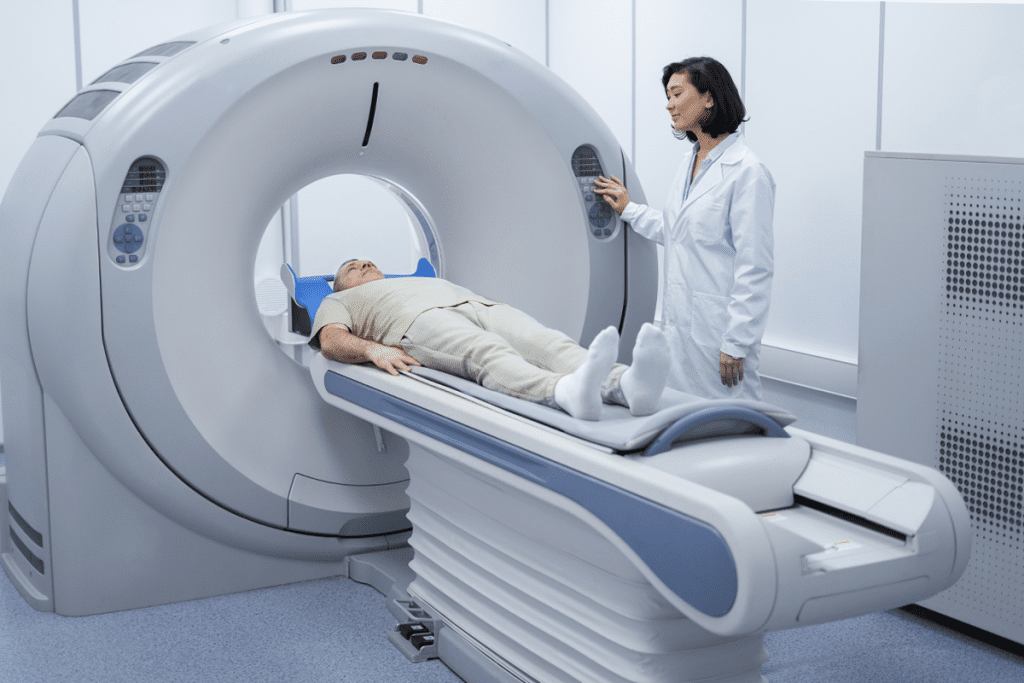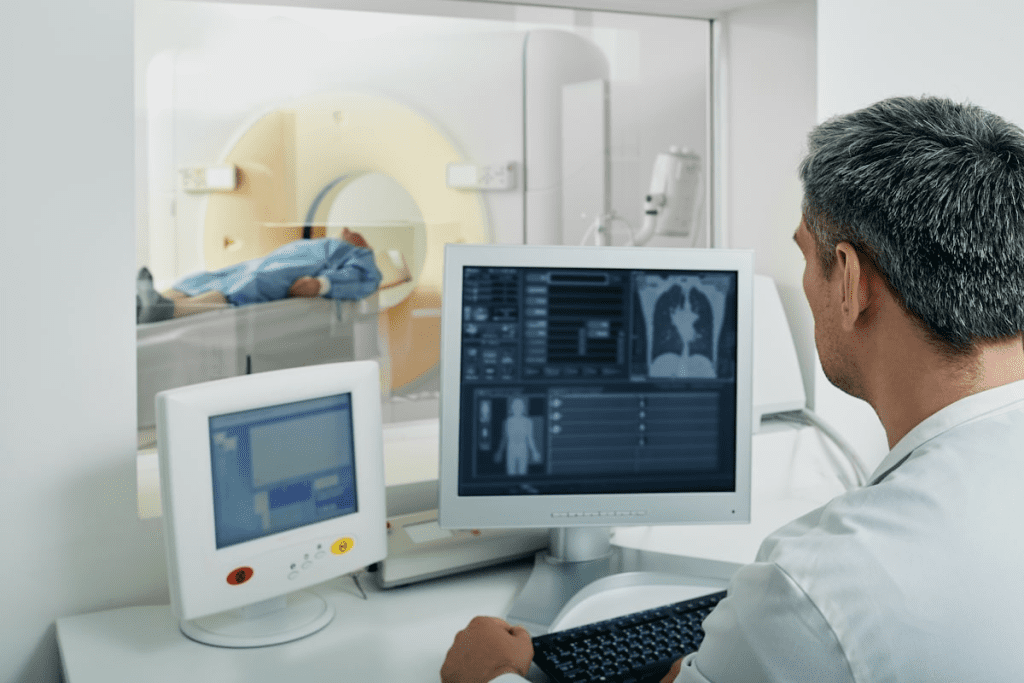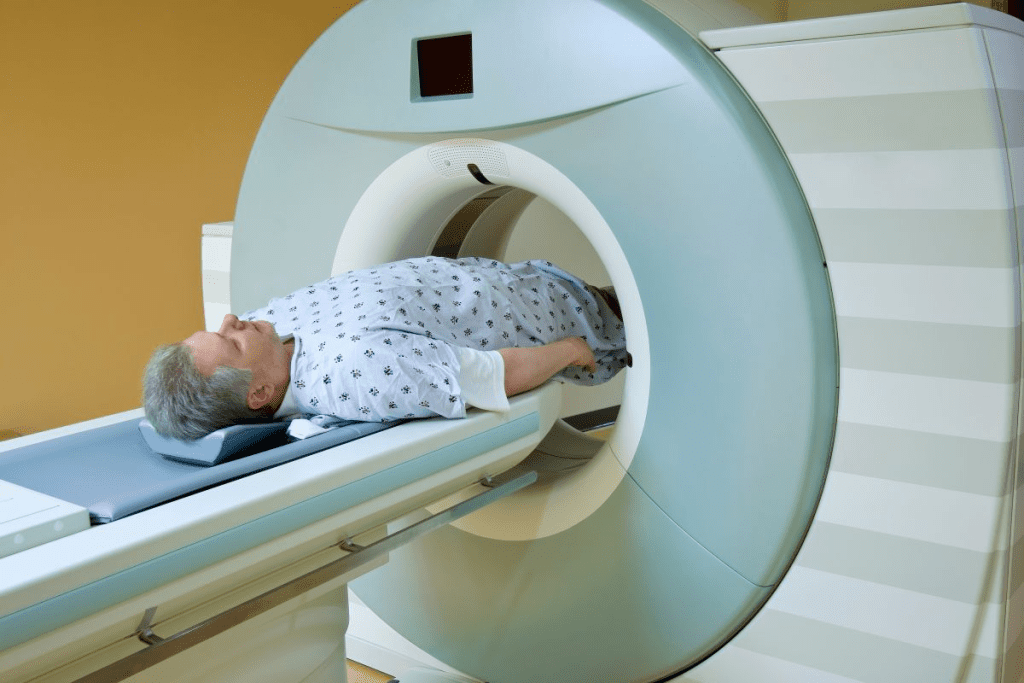Last Updated on November 25, 2025 by

Advances in prostate MRI have changed how we diagnose prostate cancer. Now, MRI helps decide if a biopsy is needed. Studies show that an MRI before a biopsy makes results more accurate. This can also mean fewer invasive tests. Prostate biopsy is often required after MRI. Learn when a prostate biopsy is essential for accurate diagnosis.
The use of MRI-first protocols is a big change in prostate cancer diagnosis and treatment. This method improves accuracy and lowers risks from unnecessary biopsies. It shows that careful MRI checks can lead to better health outcomes for patients.
Medical imaging has changed how we find and treat prostate cancer. This change has brought better accuracy and care for patients. It’s a big step forward.
Before, doctors used PSA tests and biopsies to find prostate cancer. The transrectal prostate biopsy was a common way to get tissue samples. But, these methods had downsides like false positives and missing big cancers.
The PSA test helps find cancer early but can be wrong. It might find cancers that don’t need treatment right away. Biopsies are invasive and can cause infections or bleeding.
Now, MRI-first protocols are changing how we find prostate cancer. With prostate MRI, doctors can spot who really needs a biopsy. This means fewer prostate biopsy procedures for those who don’t need them.
Research shows 25% to 55% of men might not need a biopsy if their MRI looks good. This method lowers the risk of biopsy problems and makes patients less worried.

Using MRI in diagnosis puts patients first. It helps find who really needs more tests. As we keep improving, we’ll see even better care for patients.
Knowing about the prostate MRI process is key for those thinking about a prostate biopsy. A prostate MRI shows detailed images of the prostate gland. It helps spot areas that might have cancer. This tool is vital for finding and managing prostate cancer.
A prostate MRI shows the prostate gland’s details. It can find lesions or oddities that might mean cancer. The MRI’s clear images help doctors check the prostate’s health accurately.
The MRI’s findings are key for deciding what to do next. They help doctors figure out if a biopsy is needed. If so, they know how to aim the biopsy right.

The PI-RADS scoring system is a way to judge cancer risk from MRI results. Scores go from 1 to 5. A higher score means a bigger chance of cancer.
Decisions on biopsies often depend on the PI-RADS score and PSA density. Knowing about PI-RADS is important for both patients and doctors to make smart choices about prostate health.
Doctors use the PI-RADS score with other signs to judge cancer risk. This helps avoid too many biopsies. It also makes sure those who really need a biopsy get it quickly.
Deciding on a prostate biopsy after an MRI involves several key factors. An MRI gives us important details about the prostate. But, it’s only one part of figuring out what’s going on.
A high PI-RADS score, like 4 or 5, means there’s a good chance of prostate cancer. A top urologist says, “A score of 4 or 5 means there’s a big chance of serious cancer. So, a biopsy is very important.”
“The PI-RADS system has changed how we find prostate cancer. It helps us target the right areas,”
adds a leading researcher.
With a high PI-RADS score, we often decide a biopsy is needed. MRI-guided biopsies are more accurate than usual ones. This is because MRI can spot and pinpoint suspicious areas in the prostate.
PSA density is also key in deciding on a prostate cancer biopsy. It’s the PSA level divided by the prostate’s volume. A higher number means a higher chance of cancer, even if the MRI isn’t clear.
We look at PSA density as part of a full check to see cancer risk. If it’s high, it might mean a biopsy is needed, even if the MRI isn’t clear.
Family history, age, and past biopsy results also matter in deciding on a biopsy of prostate. For example, someone with a family history of prostate cancer might get a biopsy, even if other signs aren’t strong.
In the end, choosing to have a biopsy cancer prostate is based on each person’s situation. We consider all the facts to make a choice that’s right for them.
The way we do prostate biopsies has changed a lot with MRI-guided methods. Before, doctors used a transrectal ultrasound-guided (TRUS) method. This method takes random samples from the prostate gland. But, it might miss the exact spots that need checking.
MRI-guided targeted biopsy is a big step forward in finding prostate cancer. Doctors use MRI images to guide the needle to the right spots in the prostate. This method is more precise than the old TRUS biopsy, helping catch cancers that might be missed.
MRI-guided targeted biopsies are better at finding serious prostate cancer. Research shows they’re more accurate than traditional biopsies.
Using MRI in prostate cancer diagnosis helps a lot of men avoid biopsies. If the MRI doesn’t show any big cancer, men might not need a biopsy. It’s thought that 25% to 55% of men could skip biopsies with MRI.
Adding MRI to the diagnostic process helps patients and cuts down on unnecessary tests. It makes diagnosing prostate cancer more accurate and less invasive. This way, we can give patients a more tailored and safer approach.
Understanding MRI’s role in prostate cancer diagnosis is key. It helps patients make better choices about their health. Knowing when to get a biopsy is also important.
Places like livhospital.com lead in using new technologies and team approaches. This ensures patients get top-notch care.
It’s vital to make informed choices about prostate health. We urge patients to stay updated and work with their doctors. This way, they can get the best results in diagnosing and treating prostate cancer.
MRI is key in finding and staging prostate cancer. It helps us find cancer more accurately. This often means we don’t need to do as many biopsies.
The PI-RADS score helps us guess if prostate cancer is likely. It’s based on what the MRI shows. A higher score means there’s a better chance of cancer.
No, not always. We look at the PI-RADS score and other things to decide. Sometimes, men with low scores might not need a biopsy.
An MRI-guided biopsy uses MRI images to find cancer. It’s more accurate than old methods. We find it works better.
MRI helps us see who might not have big cancer. This means some men can skip biopsies. Studies say 25-55% might avoid biopsies this way.
Starting with MRI helps find and stage cancer better. It means fewer biopsies and better results. More doctors are using this method now.
Biopsies use MRI or ultrasound to guide the needle. They take tissue samples from the prostate. This helps us check for cancer.
PSA density compares PSA levels to prostate size. We use it with other signs to decide if a biopsy is needed.
MRI is very helpful, but it can’t replace biopsies in every case. We use MRI to guide us, but biopsies are the best way to confirm cancer.
European Association of Urology. (2025). EAU Guidelines on Prostate Cancer. Retrieved from https://uroweb.org/guidelines/prostate-cancer
Subscribe to our e-newsletter to stay informed about the latest innovations in the world of health and exclusive offers!